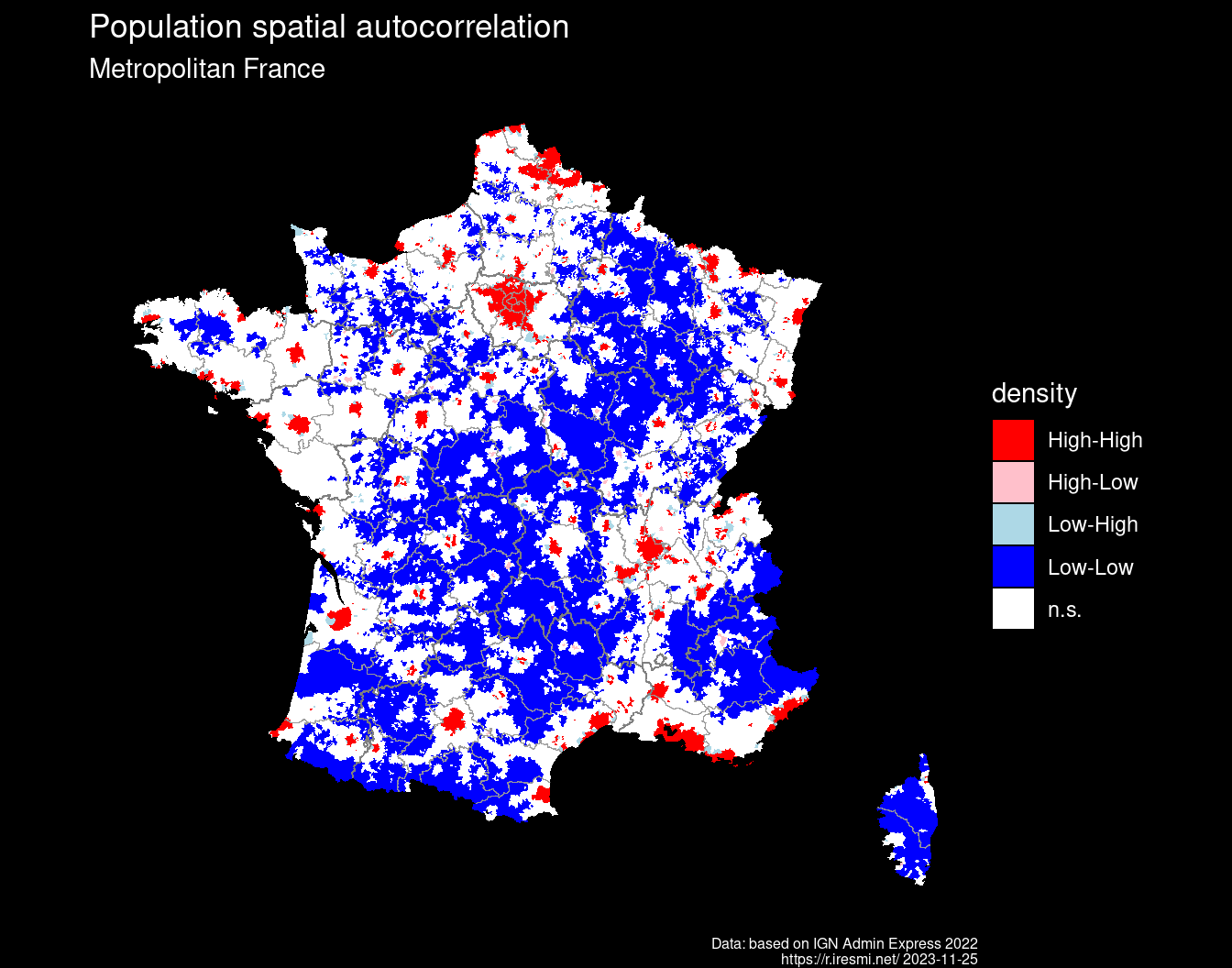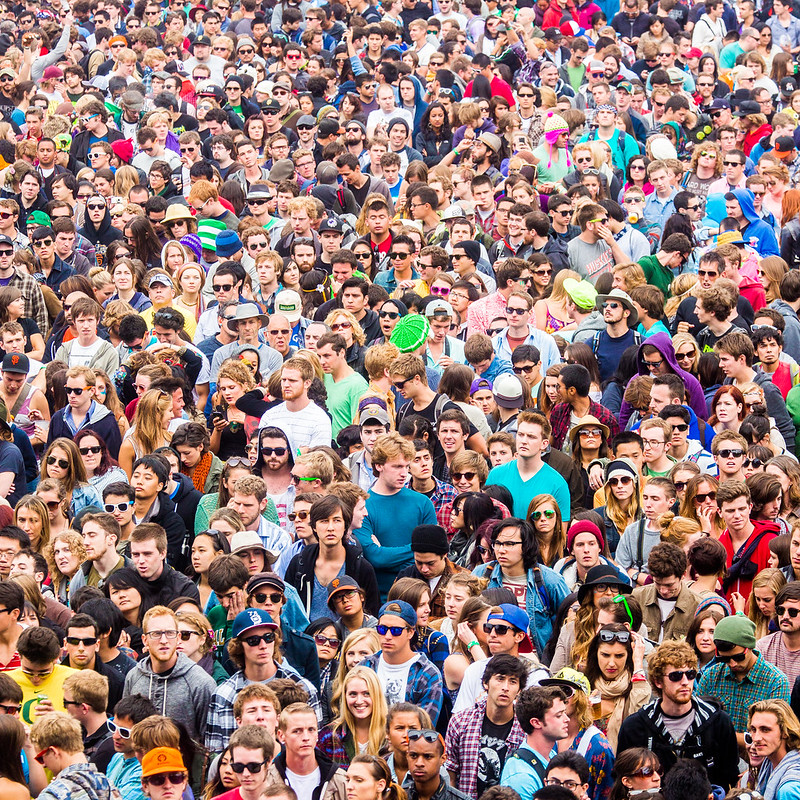library(tidyverse)
library(sf)
library(glue)
library(sfdep)Day 29 of 30DayMapChallenge: « Population » (previously).
Setup
Data
French administrative units (régions, départements, communes). Data is from an older post, based on IGN Admin Express.
# Keep only metropolitan France
com <- read_sf("~/data/adminexpress/adminexpress_cog_simpl_000_2022.gpkg",
layer = "commune") |>
filter(insee_reg > "06") |>
st_transform("EPSG:2154") |>
mutate(densite = population / (surf_adminexpress_geo_ha / 100))
dep <- read_sf("~/data/adminexpress/adminexpress_cog_simpl_000_2022.gpkg",
layer = "departement_int") |>
st_transform("EPSG:2154") |>
st_join(com, left = FALSE)
reg <- read_sf("~/data/adminexpress/adminexpress_cog_simpl_000_2022.gpkg",
layer = "region_int") |>
st_transform("EPSG:2154") |>
st_join(com, left = FALSE)Compute LISA
We will map the local indicators of spatial association (LISA) (Anselin 1995): high-high means that the spatial autocorrelation is positive and the local Moran indice is high; thus it also means that the population density of the commune is high in a cluster of high density communes.
lisa <- com |>
mutate(nb = st_contiguity(geom),
wt = st_weights(nb, allow_zero = TRUE),
lm = local_moran(densite, nb = nb, wt = wt, zero.policy = TRUE))Map
lisa |>
unnest(lm) |>
mutate(in_cluster = if_else(p_folded_sim <= 0.1, mean, "n.s.")) |>
drop_na(in_cluster) |> # get rid of off coast single communes (a few islands)
ggplot() +
geom_sf(aes(fill = in_cluster), color = NA, lwd = 0.2) +
geom_sf(data = dep, linewidth = 0.05, color = "grey60") +
geom_sf(data = reg, linewidth = 0.15, color = "grey50") +
scale_fill_manual(values = c("red", "pink", "lightblue", "blue", "white")) +
labs(title = "Population spatial autocorrelation",
subtitle = "Metropolitan France",
fill = "density",
#color = "density",
caption = glue("Data: based on IGN Admin Express 2022
https://r.iresmi.net/ {Sys.Date()}")) +
theme_void() +
theme(plot.caption = element_text(size = 6),
plot.background = element_rect(fill = "black"),
text = element_text(color = "white"))
References
Anselin, Luc. 1995. “Local Indicators of Spatial Association—LISA.” Geographical Analysis 27 (2): 93–115. https://doi.org/10.1111/j.1538-4632.1995.tb00338.x.
